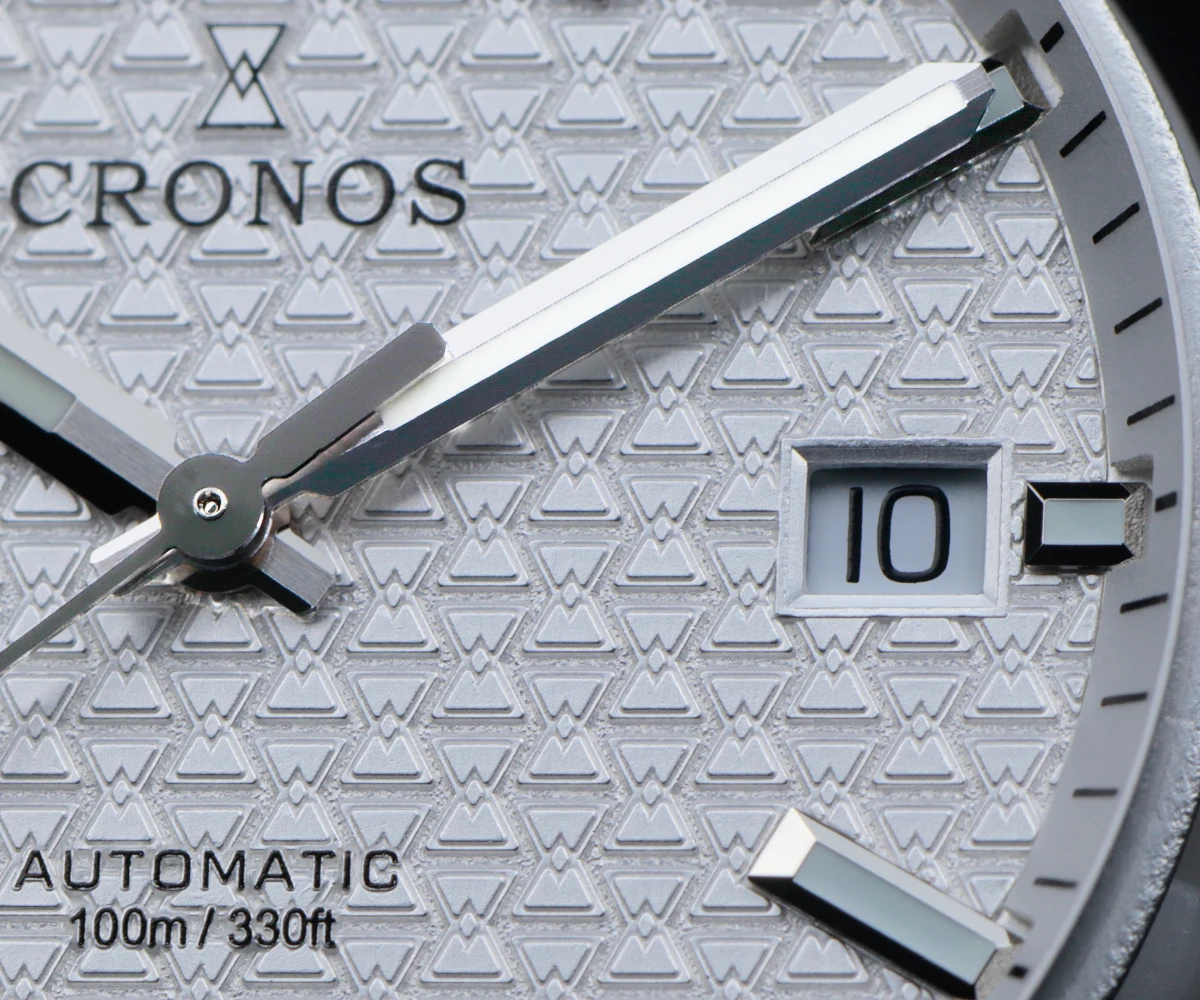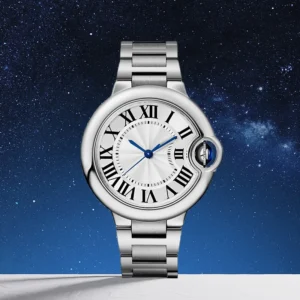1. Introduction: The Enduring Appeal of Chronograph Watches
Yes, chronograph watches can absolutely be classy—though the answer comes with important nuances related to design, context, and execution. These sophisticated timepieces represent a perfect marriage of functionality and aesthetics, offering more than just timekeeping through their distinctive stopwatch capability.
Chronographs carry a rich heritage rooted in practical applications across various professional fields. From pilots calculating flight times to doctors measuring patient heart rates, these functional tools have evolved significantly from their utilitarian beginnings. What makes chronographs particularly interesting is this inherent tension between utility and elegance—a sophisticated complication that serves a purpose while potentially enhancing the wearer’s style.
The journey from practical instrument to sophisticated accessory represents one of horology’s most fascinating evolutions. The technical aspects of history-dive watch engineering share many parallels with chronograph development, as both began as specialized tools before becoming style statements.
In this article, we’ll explore what truly defines classiness in timepieces, examine when chronographs meet these criteria, and provide practical guidance on wearing them with elegance. We’ll navigate the balance between complexity and sophistication that makes these timepieces so enduringly appealing to watch enthusiasts worldwide.
2. Defining “Classy” in Horology
Before determining if chronographs can be classy, we need to understand what “classy” means in the context of fine timepieces. In horology, classiness typically encompasses:
- Understated elegance that doesn’t demand attention
- Refined aesthetics with proportionate elements
- Versatility across different settings and attire
- Quality materials and thoughtful finishing
- Timeless design that transcends trends
Traditional dress watches exemplify these attributes through their simplicity, slim profiles, and often precious metal construction. They typically feature clean dials with minimal complications, allowing them to slide discreetly under shirt cuffs and complement formal attire without distraction.
What constitutes “classy” varies somewhat by context. A watch appropriate for a black-tie event differs from one suited to a business meeting or smart-casual dinner. However, certain fundamentals remain consistent—restraint, quality craftsmanship, and attention to proportion.
It’s worth noting that classiness stands in contrast to flashiness, excessive size, or purely utilitarian design. The most elegant timepieces don’t shout for attention but rather reward closer inspection with subtle details and thoughtful execution.
Our collection of automatic chronograph watches showcases how these complex timepieces can achieve a sophisticated aesthetic when designed with these principles in mind.
3. The Anatomy of a Chronograph Watch
To evaluate a chronograph’s elegance, we must understand its unique components and how they affect its overall aesthetic. A chronograph’s defining feature is its stopwatch functionality, typically controlled by pushers flanking the crown and displayed on sub-dials.
These functional elements include:
| Component | Function | Aesthetic Impact |
|---|---|---|
| Pushers | Start/stop and reset chronograph | Add visual complexity to case profile |
| Sub-dials | Display elapsed time measurements | Create busier dial appearance |
| Tachymeter | Measures speed based on time | Often adds a ring of numbers around dial |
| Central seconds hand | Tracks elapsed seconds when activated | Adds additional hand to dial |
| Crown | Sets time and often winds movement | Contributes to case profile complexity |
These functional elements inevitably create a more complex visual presentation than time-only watches. The inner workings of chronograph watches are equally intricate, requiring sophisticated mechanisms to coordinate multiple timing functions simultaneously.
Chronograph layouts typically follow established patterns. A bi-compax design features two sub-dials (usually tracking minutes and hours), while tri-compax adds a third (typically for running seconds). These layouts significantly impact the dial’s visual balance and perceived elegance.
The inherent complexity of chronographs presents a design challenge. Watchmakers must carefully balance functionality with aesthetic harmony—a balance that, when achieved successfully, can result in timepieces of remarkable sophistication.
4. Key Elements That Define a Classy Chronograph
Design and Aesthetics
The dial of a sophisticated chronograph demonstrates thoughtful balance and symmetry despite its inherent complexity. The arrangement of sub-dials creates visual harmony rather than chaos, with proportions carefully calibrated to maintain readability without overwhelming the eye.
Color plays a crucial role in perceived elegance. More sophisticated chronographs often feature restrained palettes—silver, black, dark blue, or cream dials paired with complementary sub-dials and accents. This restraint creates visual cohesion and versatility across different settings.
The style of indices and hands significantly impacts elegance. Applied (rather than printed) markers, faceted or polished hands, and thoughtful typography elevate the perceived quality. Even the integration of pushers into the case profile matters—more refined designs feature streamlined pushers that complement rather than disrupt the case silhouette.
Case and Proportions
Size dramatically affects a chronograph’s formality. While modern trends have embraced larger watches, more elegant chronographs typically maintain moderate dimensions—generally 36-40mm in diameter. This restraint allows the watch to sit comfortably on the wrist and slide under shirt cuffs when needed.
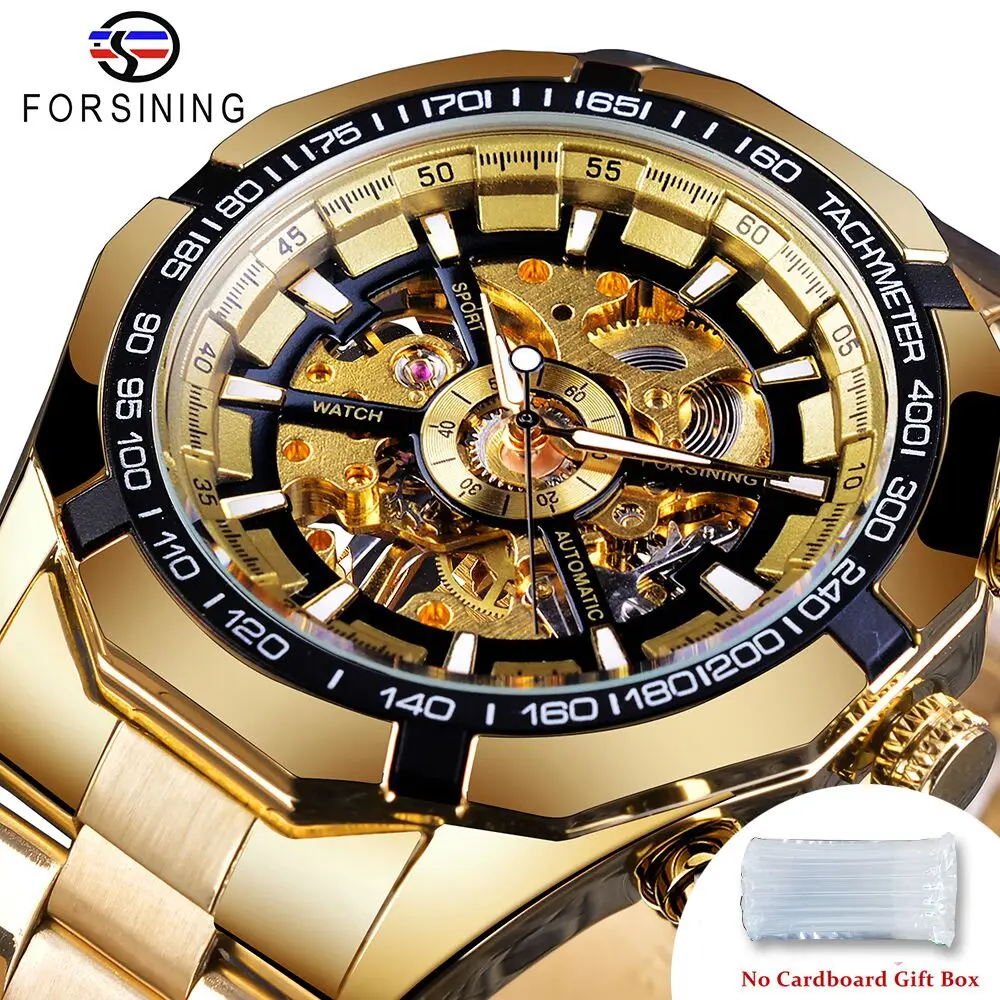
Case materials send strong signals about a watch’s positioning. Precious metals like gold and platinum instantly elevate formality, though well-executed stainless steel cases with polished and brushed finishing can achieve remarkable elegance while maintaining versatility.
Case thickness presents a particular challenge for chronographs, as their complex movements often require additional space. The most elegant examples manage this constraint through careful engineering, creating relatively slim profiles despite their mechanical complexity.
Strap and Bracelet Choices
The strap or bracelet dramatically affects a chronograph’s formality. Alligator or fine leather straps instantly elevate elegance and formality, particularly in black or dark brown. Metal bracelets with fine finishing can also work well, especially those with integrated designs that create a cohesive look.
Our collection of thin automatic dress watches demonstrates how thoughtful proportions contribute to elegance in timepieces, a principle that applies equally to well-designed chronographs.
Movement Quality and Craftsmanship
The movement powering a chronograph significantly influences its perceived quality. Traditional mechanical chronographs, especially those featuring column-wheel mechanisms and fine finishing, represent the pinnacle of horological craftsmanship.
Many fine chronographs feature exhibition casebacks that reveal this mechanical artistry. The visible craftsmanship—Geneva stripes, blued screws, perlage, and other decorative techniques—reinforces the watch’s status as a refined object of appreciation rather than merely a functional tool.
5. The Evolution of the “Dress Chronograph”
Chronograph watches have undergone a fascinating transformation from pure tool watches to acceptable accessories for more formal occasions. This evolution mirrors similar developments seen in the evolution of dive watch technology, where functional instruments gradually gained broader social acceptance.
Early chronographs were primarily functional instruments—bulky, utilitarian devices designed for specific professional applications. Their evolution into more refined accessories began as manufacturers recognized the appeal of combining technical capability with aesthetic sophistication.
The concept of the “dress chronograph” emerged as watchmakers refined these designs with more elegant proportions, cleaner dials, and luxurious materials. These watches maintained stopwatch functionality while adopting characteristics more commonly associated with dress watches—slimmer profiles, refined details, and versatile aesthetics.
Key developments included:
- Thinner chronograph movements allowing for more elegant case profiles
- Cleaner dial designs with better proportioned sub-dials
- More sophisticated finishing techniques
- Integration of precious metals and fine leathers
- Balanced pusher designs that complement rather than disrupt the case
Contemporary watch culture has become increasingly accepting of complications in formal settings, recognizing that technical sophistication can coexist with visual refinement. Today’s dress chronographs represent this perfect balance—timepieces that celebrate mechanical ingenuity while maintaining the restraint expected in formal contexts.
6. How to Wear a Chronograph with Style: Occasion-Based Guide
Formal Business Settings
In corporate environments, chronographs can project both sophistication and competence when chosen carefully:
– Opt for chronographs with clean dials in classic colors (black, white, silver)
– Choose moderate sizes (38-40mm) that don’t overwhelm the wrist or appear ostentatious
– Consider models with integrated bracelet designs or quality leather straps
– Look for refined pushers and crown guards that maintain a sleek profile
– Pair with business attire by ensuring the watch slides comfortably under shirt cuffs
Formal Events and Black Tie
The most formal occasions traditionally call for the utmost simplicity in timepieces, making chronographs a potentially challenging choice:
– For black tie, consider only the most refined chronographs with precious metal cases
– Look for models with minimal sub-dials (two rather than three) for cleaner aesthetics
– Choose ultra-thin examples specifically designed for formal wear
– Consider a traditional dress watch as an alternative when formality is paramount
– Black leather straps provide the most appropriate formal look
Business Casual Environments
Chronographs truly excel in business casual settings, where their blend of functionality and style feels most appropriate:
– More flexibility in size, though extremes should still be avoided
– Stainless steel cases work perfectly in these contexts
– Blue, black, or white dials offer versatility with business casual attire
– Both leather straps and metal bracelets work well
– The chronograph function itself becomes a conversation piece
Chronograph pilot watches offer excellent versatility across these business and casual contexts, combining technical capability with refined aesthetics.
Smart Casual and Everyday Elegance
In less formal settings, chronographs can become true style expressions:
– Greater freedom in color choices and design details
– Opportunity to showcase more distinctive pusher designs or case shapes
– Ability to experiment with different strap materials and colors
– Perfect balance of functionality for daily use and style for social settings
– Chance to highlight the watch as a deliberate style choice rather than merely an accessory
7. Balancing Complexity and Elegance: Chronograph Design Philosophy
The most sophisticated chronograph watches achieve what might seem contradictory—they embrace mechanical complexity while projecting visual elegance. This delicate balance represents the pinnacle of watch design philosophy.
Master watchmakers approach this challenge through the principle of “restrained complexity.” They acknowledge the necessary elements of a chronograph but execute them with such refinement that complexity becomes a virtue rather than a distraction. The multiple hands, sub-dials, and scales are arranged with such precision that they create harmony rather than chaos.
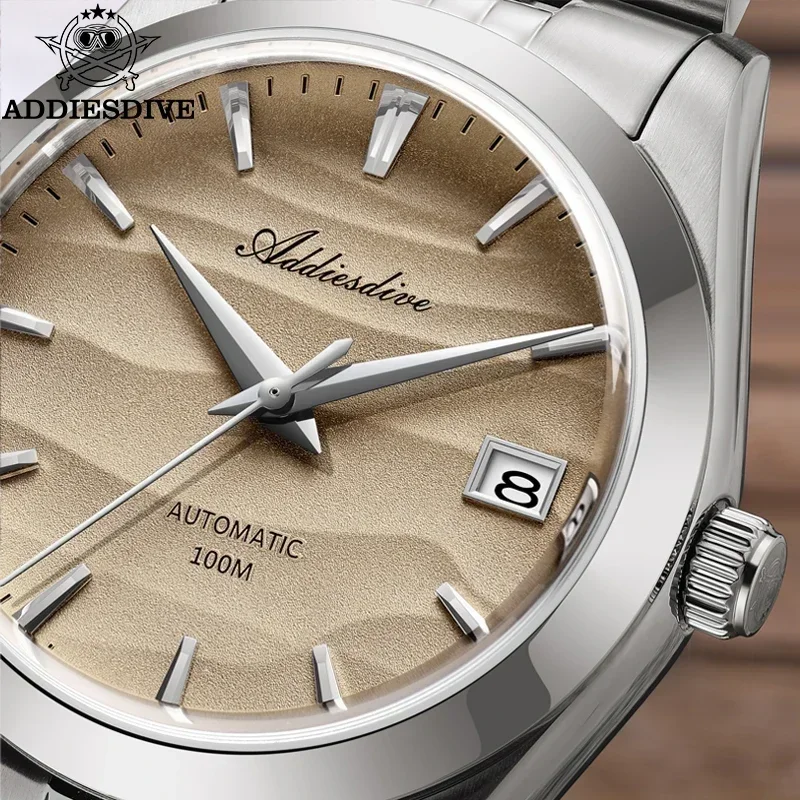
Proportion plays a critical role in this balance. The relationship between sub-dial size, main dial diameter, hand length, and marker dimensions must be carefully calibrated. Even spacing of a few millimeters can transform a cluttered dial into a balanced composition. Typography also proves crucial—the right font weight and size ensures readability without visual heaviness.
Color theory influences these designs significantly. The most elegant chronographs often employ subtle contrast rather than stark differentiation, using tone-on-tone approaches or complementary color schemes that guide the eye without jarring transitions.
The enduring legacy of chronograph complications stems from this successful marriage of function and form—complex mechanisms expressed through refined design language.
8. Common Misconceptions About Chronograph Classiness
Myth: “All chronographs are too sporty for formal settings”
Fact: While many chronographs have sporty origins, numerous examples are specifically designed with formal elegance in mind. Dress chronographs with refined proportions, precious metal cases, and clean dials are entirely appropriate for many formal contexts.
Myth: “A busy dial can’t be elegant”
Fact: Complexity and elegance aren’t mutually exclusive. The finest chronographs demonstrate how thoughtful design can transform necessary complexity into visual harmony. The key lies in balance, proportion, and refined execution rather than minimalism alone.
Myth: “Only precious metal chronographs can be classy”
Fact: While precious metals certainly enhance formality, expertly finished stainless steel chronographs can achieve remarkable elegance. The quality of design and execution matters more than the base material alone.
Myth: “Chronographs are always too thick for dress shirts”
Fact: While chronograph movements do typically add thickness, numerous examples have been engineered specifically to maintain slim profiles. These models slide comfortably under shirt cuffs while retaining full functionality.
Myth: “Chronographs are only appropriate for casual wear”
Fact: Contemporary watch culture has become increasingly accepting of sophisticated complications in formal settings. The history of professional diving watches evolution shows a similar pattern of technical watches gaining broader acceptance through refined execution.
9. The Versatility Factor: Why Chronographs Span Style Categories
The chronograph’s remarkable versatility helps explain its enduring popularity. Few other watch styles transition so effectively across different dress codes and contexts.
This versatility stems from the chronograph’s unique position at the intersection of functionality and aesthetics. Unlike highly specialized watches (dive watches with their pronounced bezels or field watches with their utilitarian design), well-executed chronographs balance technical capability with refined styling.
Many watch enthusiasts seeking to build a focused collection find that a quality chronograph can serve as an ideal “only watch”—sophisticated enough for formal occasions yet practical for everyday wear. This versatility represents tremendous value, eliminating the need for multiple specialized timepieces.
The chronograph also satisfies a psychological desire for sophisticated tools. Even when rarely used, the stopwatch functionality represents human ingenuity and precision engineering. There’s something inherently satisfying about wearing a beautiful object that also serves a purpose—form and function in perfect harmony.
This practical elegance aligns with contemporary luxury values that favor meaningful craftsmanship over mere ostentation. A fine chronograph signals appreciation for engineering excellence and horological tradition rather than simply displaying wealth.
10. Can a Chronograph Be Your Dress Watch? Practical Considerations
For those considering whether a chronograph can serve as their primary formal watch, several practical factors deserve consideration:
Sleeve compatibility: Dress shirt cuffs typically accommodate watches under 12mm thick. While many chronographs exceed this dimension, slimmer models designed with formal wear in mind do exist.
Dial restraint: For maximum versatility, seek chronographs with balanced dials in neutral colors. Silver, white, black, or navy blue offers the greatest flexibility across different attire.
Size considerations: A chronograph intended for formal settings should maintain modest proportions, generally 36-40mm in diameter depending on wrist size.
Strap options: Consider models that accept quick-change straps, allowing transformation from casual to formal through a simple strap swap.
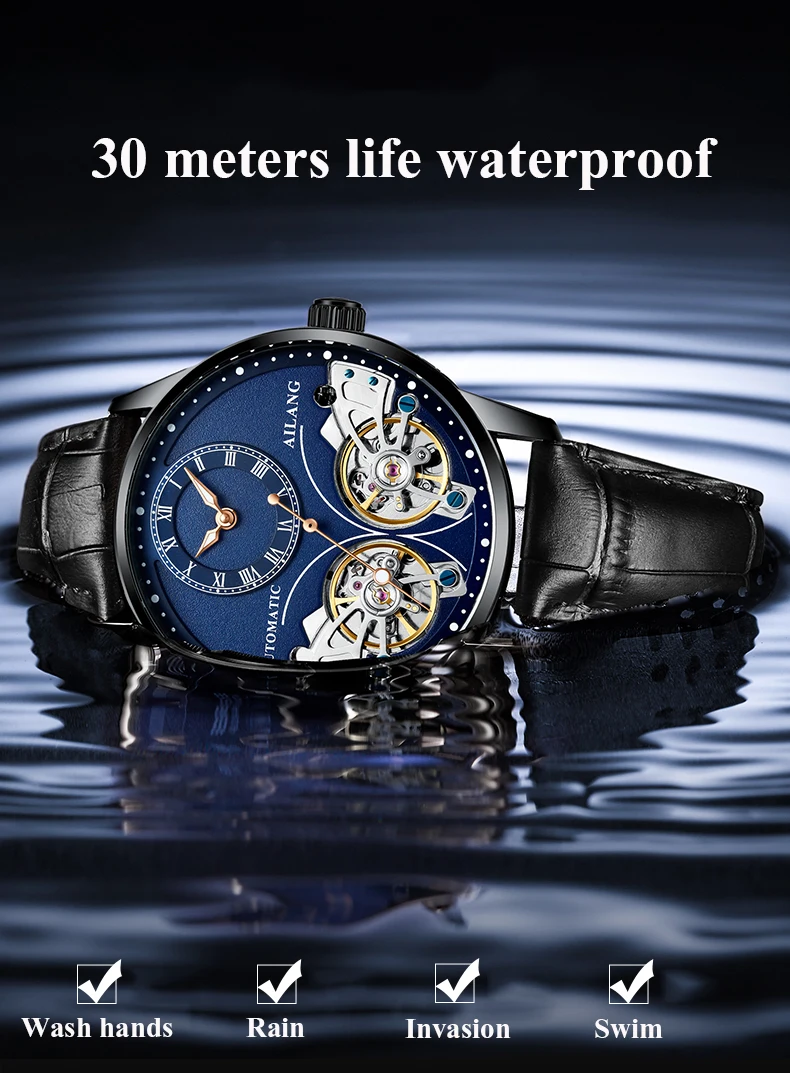
While a chronograph can certainly serve as a versatile dress watch, some ultra-formal occasions might still call for a dedicated dress piece. Our selection of classic automatic dress watches offers excellent options for these rare situations where absolute simplicity remains the expectation.
It’s worth noting that modern watch etiquette has become considerably more relaxed. In most contexts, a well-designed chronograph will be entirely appropriate, especially when chosen with attention to proportion and elegance.
Classic Automatic Dress Watches, Day Date Automatic Watches, Perpetual Calendar Automatic Watches
Price range: $540.60 through $574.60 Select options This product has multiple variants. The options may be chosen on the product pageAutomatic Chronograph Watches, Chronograph Pilot Watches
Price range: $233.36 through $237.58 Select options This product has multiple variants. The options may be chosen on the product pageClassic Automatic Dress Watches, GMT Automatic Watches, GMT Pilot Watches
Price range: $1,240.86 through $1,463.33 Select options This product has multiple variants. The options may be chosen on the product pageAutomatic Chronograph Watches, Classic Style Dive Watches
$3,053.06 Select options This product has multiple variants. The options may be chosen on the product pageAutomatic Skeleton Watches, Open Heart Automatic Watches
$98.36 Select options This product has multiple variants. The options may be chosen on the product pageClassic Automatic Dress Watches, Thin Automatic Dress Watches
$437.64 Select options This product has multiple variants. The options may be chosen on the product page
11. Is a Chronograph Worth the Investment for Formal Occasions?
When considering the investment value of a chronograph for formal settings, several factors suggest these timepieces offer compelling long-term proposition:
First, chronographs typically maintain strong value retention, particularly those from established manufacturers with clean, classic designs. Unlike highly trendy pieces that may fall from favor, well-executed chronographs with balanced proportions tend to remain desirable over time.
The versatility of chronographs significantly enhances their value proposition. While a dedicated dress watch might only be appropriate for formal occasions, a sophisticated chronograph transitions effectively between business, casual, and (in many cases) formal settings. This versatility translates to excellent “cost-per-wear” compared to more specialized timepieces.
Chronographs also offer mechanical complexity that many enthusiasts appreciate. The intricate stopwatch functionality represents significant additional value in terms of engineering and craftsmanship compared to simpler three-hand watches at similar price points.
For those building a focused collection, a quality chronograph often represents better value than multiple specialized watches. Rather than purchasing separate timepieces for different contexts, a thoughtfully selected chronograph can serve multiple roles effectively.
Many watch enthusiasts find that chronographs with clean, balanced designs age particularly well aesthetically. Their technical character feels modern and relevant even as fashion evolves, especially when compared to ultra-minimal designs that may feel dated as trends change.
For those seeking alternative sophisticated styles, our open heart automatic watches offer different expressions of horological appreciation.
12. The Chronograph as a Statement of Sophisticated Utility
Beyond mere style considerations, the chronograph represents something more profound—an appreciation for the perfect marriage of beauty and function. These timepieces celebrate the engineering ingenuity required to track elapsed time with mechanical precision while maintaining aesthetic harmony.
The chronograph embodies “useful beauty”—an object that serves a purpose while delighting the senses. This balance resonates particularly in contemporary luxury, where consumers increasingly value substantive craftsmanship over superficial styling or brand names alone.
The chronograph’s historical associations with precision professionals—pilots, doctors, scientists, and athletes—imbue these watches with a sense of purpose. Even when rarely used, the chronograph function represents human achievement and the quest for greater precision.
What makes truly classy chronographs special isn’t their category but their execution. When designed with attention to proportion, balance, and refined details, these complex timepieces achieve a sophisticated elegance that transcends their functional origins.
The appreciation for chronographs often deepens with time and knowledge. What begins as an aesthetic preference evolves into admiration for the mechanical artistry beneath the dial—hundreds of components working in harmony to track the passage of time in multiple ways.
13. Final Thoughts: Choosing a Chronograph That Matches Your Style
Yes, chronograph watches can absolutely be classy when well-executed. The most elegant examples balance their inherent complexity with refined design, creating timepieces that work across various settings while showcasing horological craftsmanship.
Rather than adhering to rigid rules, consider your personal style, typical environments, and what you value most in a timepiece. Some may prioritize versatility across different dress codes, while others might value the mechanical ingenuity visible through an exhibition caseback.
Context remains crucial—a chronograph perfect for business settings might not be ideal for black-tie events. However, with thoughtful selection, many chronographs can navigate a remarkable range of environments with ease and sophistication.
Ultimately, the classiest watch is one that reflects your authentic appreciation for horology while complementing your personal style. A well-chosen chronograph represents not just a timing instrument but a statement about valuing both form and function—the essence of sophisticated taste.

